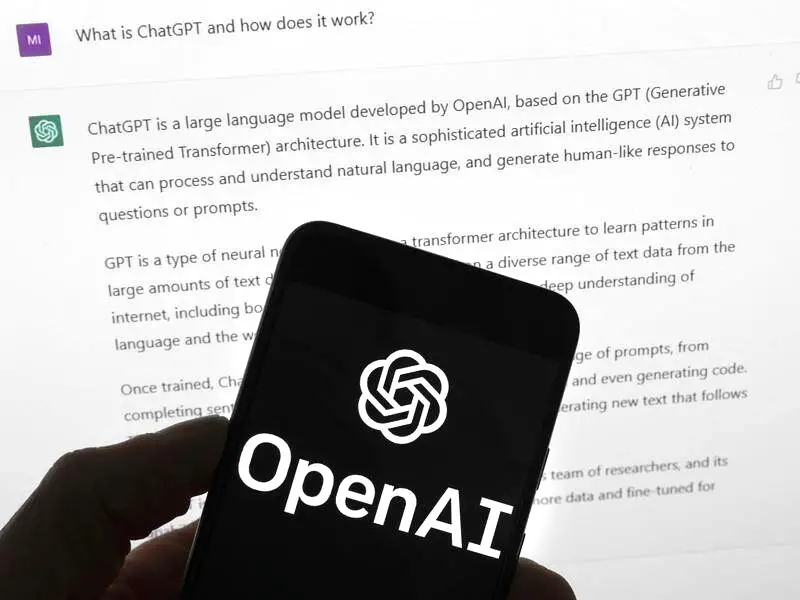Global audiences suspicious of AI-powered newsrooms, report finds – Kat Technical
Public Wary of Robot Reporters: Global Audiences Suspicious of AI-Powered News, Says Report

Global Audiences: The rapid integration of AI-powered technologies into newsrooms worldwide has generated a mixture of excitement and apprehension. Recent studies indicate that global audiences remain skeptical about the reliability and trustworthiness of news generated by artificial intelligence. This report delves into the reasons behind this suspicion, the potential implications for the media industry, and the steps needed to bridge the trust gap between AI-generated content and its consumers.

The Rise of AI in Journalism
AI technology has been increasingly adopted by news organizations to enhance their capabilities in news gathering, content creation, and distribution. Automated journalism, which uses AI to generate news stories from data inputs, has been particularly transformative. This innovation promises faster news delivery, cost efficiency, and the ability to cover a wider range of topics.
However, despite these benefits, there is a growing concern among audiences about the authenticity and accuracy of AI-generated news. Trust in media is a critical component of democratic societies, and any erosion of this trust can have significant repercussions.
Factors Contributing to Audience Suspicion
Several factors contribute to the skepticism surrounding AI-powered newsrooms:
Lack of Transparency
One of the primary concerns is the lack of transparency in how AI algorithms select and process information. Unlike human journalists, whose biases and methodologies can be scrutinized, AI systems operate in a black box. This opacity makes it difficult for audiences to understand how decisions are made and to what extent biases may be influencing the news they consume.
Perceived Lack of Accountability
Accountability is another critical issue. When news is generated by AI, it becomes challenging to hold any individual or entity responsible for inaccuracies or misinformation. This perceived lack of accountability undermines trust and raises questions about the reliability of the content produced.
Fear of Bias and Manipulation
Audiences are also wary of the potential for AI algorithms to be manipulated to serve specific agendas. The fear that AI could be used to subtly or overtly shape public opinion by filtering information in biased ways is a significant concern. This fear is compounded by the fact that AI algorithms are designed by humans, who may embed their own biases, intentionally or unintentionally, into these systems.
Impact on the Media Industry
The suspicion of AI-powered newsrooms has far-reaching implications for the media industry. Trust is the cornerstone of any media organization, and a decline in trust can lead to decreased audience engagement and revenue. News organizations must navigate this landscape carefully to ensure they maintain their credibility while leveraging the benefits of AI.
Challenges for Traditional Media
Traditional media outlets face the challenge of integrating AI technologies in ways that enhance their operations without compromising their integrity. This requires a delicate balance between embracing innovation and maintaining the principles of ethical journalism. Failure to achieve this balance could result in a loss of audience trust and loyalty.
Opportunities for New Entrants
Conversely, new media entrants who effectively address these concerns have the opportunity to gain a competitive edge. By prioritizing transparency, accountability, and bias mitigation, these organizations can build trust with audiences who are skeptical of AI-generated content. This approach could position them as trustworthy sources of news in a crowded and competitive landscape.
Strategies to Build Trust in AI-Powered Newsrooms
To overcome the challenges associated with AI-generated news, media organizations must adopt strategies that enhance transparency, accountability, and fairness.
Enhancing Transparency
Transparency can be improved by providing clear explanations of how AI algorithms work and how they are used in news production. News organizations should disclose the sources of data used by AI systems and the criteria for selecting and prioritizing news stories. By demystifying the process, organizations can help audiences understand and trust AI-generated content.
Establishing Accountability Mechanisms
To address concerns about accountability, media organizations should implement robust oversight mechanisms. This could include appointing ombudsmen to review AI-generated content, creating channels for audience feedback, and establishing protocols for correcting errors. Ensuring that there are clear lines of responsibility can help build trust in the reliability of AI-generated news.

Mitigating Bias
Bias in AI systems can be mitigated through diverse and inclusive data sets, regular audits, and continuous improvement of algorithms. Media organizations should invest in training AI systems to recognize and correct biases, and they should be transparent about these efforts. Collaboration with independent watchdogs and academic institutions can also help ensure that AI systems remain fair and unbiased.
Future Prospects for AI in Journalism
Despite the challenges, the future of AI in journalism holds significant promise. By addressing the concerns of global audiences and implementing strategies to build trust, AI-powered newsrooms can enhance the quality and reach of news.
Innovations on the Horizon
Advancements in AI technology will continue to drive innovation in journalism. Personalized news experiences, real-time fact-checking, and enhanced multimedia content are just a few areas where AI can add value. As these technologies evolve, they have the potential to transform the media landscape in profound ways.
Collaborative Approaches
The future success of AI in journalism will likely depend on collaborative approaches. Partnerships between media organizations, technology companies, and regulatory bodies can help ensure that AI technologies are used responsibly and ethically. By working together, these stakeholders can create a media environment that leverages the benefits of AI while safeguarding the principles of journalistic integrity.
Conclusion
The integration of AI into newsrooms is an evolving process that presents both opportunities and challenges. Global audiences remain suspicious of AI-powered newsrooms due to concerns about transparency, accountability, and bias. However, by adopting strategies that address these concerns, media organizations can build trust and harness the potential of AI to enhance their operations.
As AI continues to advance, the media industry must remain vigilant in ensuring that these technologies are used in ways that uphold the principles of ethical journalism. By doing so, AI-powered newsrooms can gain the trust of global audiences and contribute to a more informed and engaged public.



